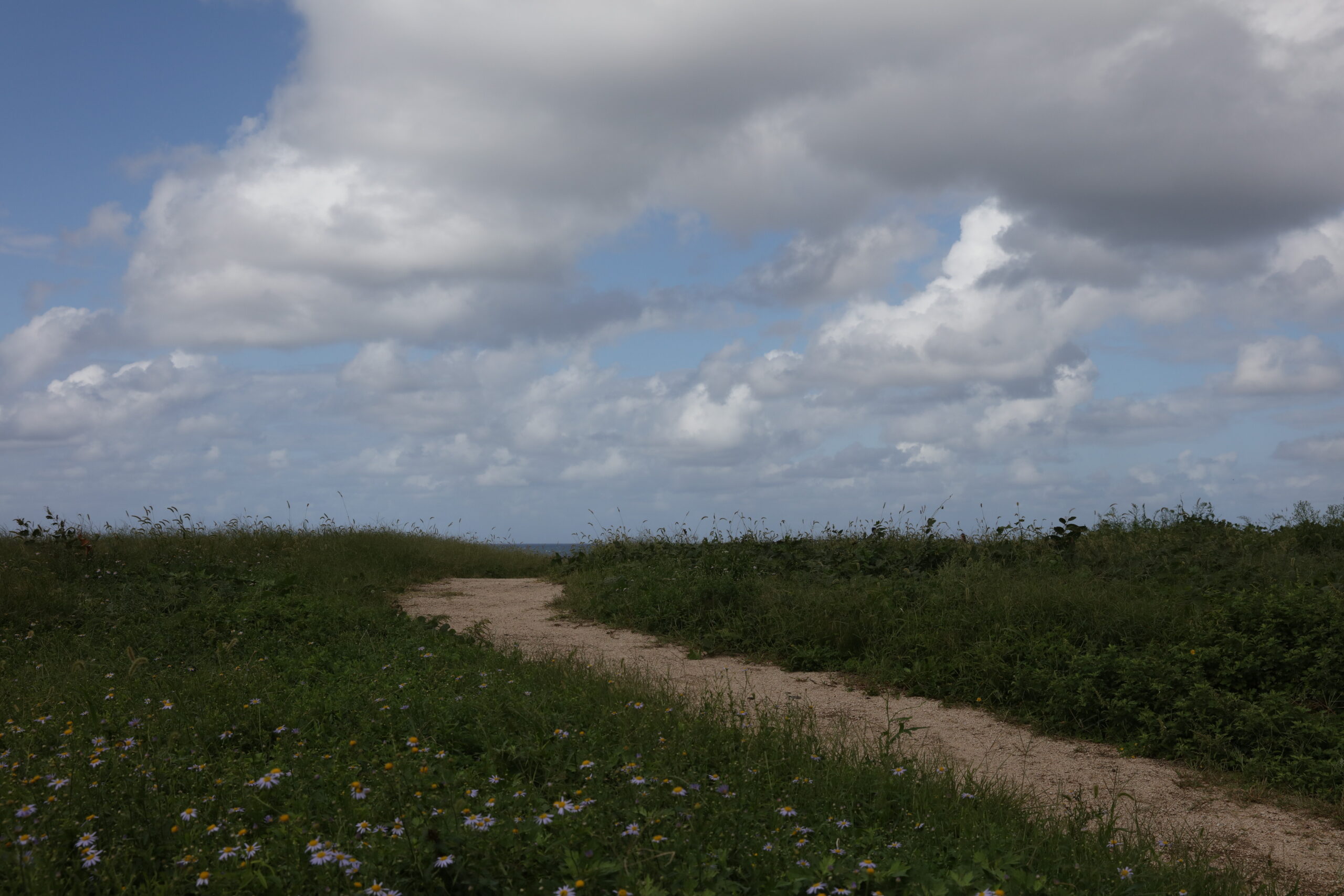
2025.8.14
The Path to Taiza
Kayo Tokuda
Only two weeks after completing my work on the Teshima Art Museum in October 2010, I moved to Kyoto. Meeting so many people involved in the world of crafts instilled me with a desire to better understand the skills and passions that go into their marvelous work. That’s how I started studying ceramics. I visited such historic locales of ceramics as Arita, Imari, Karatsu, Hagi, Tobe, and Mashiko. These trips piqued my interest in the ceramic traditions of the Ryukyu Islands and the Joseon Dynasty, which I studied for years by traveling, reading, and watching videos.
In an article in Genron3, published in 2016, I learned about the art projects that were happening at the Korean DMZ and took a train from Seoul, and then a bus, to visit the headquarters of the “White Skull” 3rd Infantry Division of the South Korean Army. The landscape reached into the distance. North Korean military installations could be seen up in the mountains. Just ahead of me, steel fences formed two lines, stretching east and west.
The trees and landscape on the south side look the same as on the north. It pains me to imagine what it must have been like for these people, who have a common history, to wake up one day and find themselves divided.
I know so little about politics and economics. I’ve poured all of my passion into art. Sometimes the best that we can do is pray for peace, offering to nature whatever sense of solace we can fashion out of natural materials with our hands. We do what we can; there is no other choice. That winter, I was prompted by the Korean artist Do Ho Suh, who told me that I had a “gift for helping artists turn their souls into art,” to apply for status as a nonprofit, which I did, with the guidance of architect Ryue Nishizawa, educator Yutaka Tokuyama, entrepreneur Hidetoshi Nakata, and Soichiro Fukutake, to whom I’m especially indebted. Once my application was approved, it was only a matter of time before the concept for “Tomorrow Field” took root.
There’s no textbook explaining how to convey the spirit of art. I felt that it was my responsibility, my mission, to create something that would be valued and loved twenty years or fifty years from now, to create a place where people come together, share experiences, and work. Partnering with the next generation, who hold the future in their hands, we sought to create a setting that displays the natural beauty of Japan—a place rooted in history, so livable and vibrant it evokes the earliest stages of Japanese culture.
Starting in Kyoto, I traveled around Nara, Wakayama, Mie, and Shiga, searching high and low for the ideal location, until the summer of 2020, when I visited the Onaru Ancient Burial Mounds on the northern coast of Kyoto. These stone tombs could be as old as the fourth or fifth century. Set up to face the ocean, these carefully built crypts of bare volcanic rock transport you to a time, deep in the past, when funerals were held facing the sea and the loved ones of the departed wished them a peaceful journey through the afterlife.
A while back, some friends and I formed a discussion group to look into the question of what it would be like for human beings to live on Mars, which is an imminent reality. But we concluded that only a small number of people would ever be able to live there, and those who did would be confined to tiny stations, peeking from the windows as they hid from the red planet’s inhospitable weather. This led us to abandon the question of what form life (and art) in outer space might take, and instead consider what would be involved in sustaining human life on earth, as well as what needs to be done to preserve our sky, our seas, our mountains, and ensure a safe environment for the children of tomorrow, which naturally led to the creation of Tomorrow Field. For art to inhabit our societies, we need villages that cultivate a sense of the sublime.
As if to tell us that the sky and ocean hear our prayers, the waves lap against the shoreline, only to recede. When I visited this coastal village, known as Taiza, with my young colleague Shunya Hashizume, who is still in his twenties, our intuition told us that this place has everything essential to art, that this was the source of everything.
Kayo Tokuda, 2021
